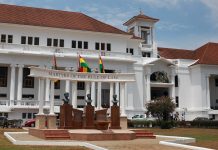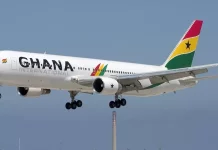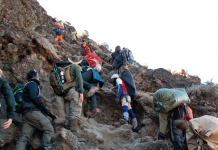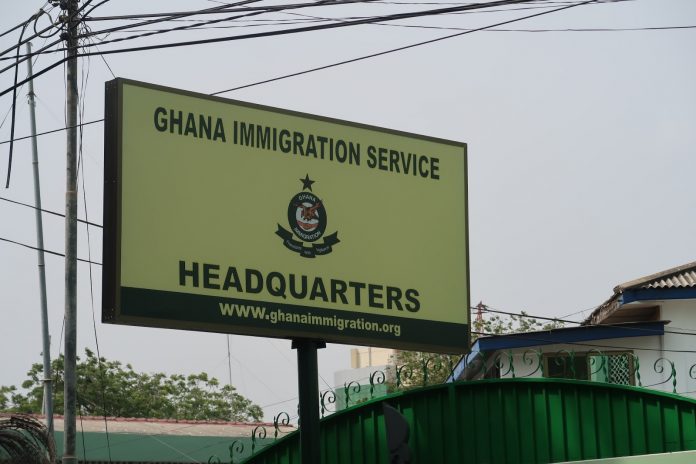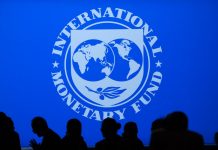The Increasing attention given to migration globally over the past two decades has caused many governments to maximize benefits to their economies to decrease its negative impacts.
Ghana’s economy is said to be the second largest in West Africa after Nigeria which has attracted many immigrants till date.
Background
International Organization for Migration (IOM), in 2009, said, the relative peace, security, and political stability in the country has contributed to the reasons people move to Ghana.
It is important to understand the concept of migration as basically the movement of people from one place to live in another, while a migrant is a person who moves away from his or her place of usual residence, whether within a country or across an international border, temporarily or permanently, and for a variety of reasons.
Integration can also be seen as the process of mutual adaptation between the host society and the migrants themselves, both as individuals and as groups.
There is, therefore, the nexus between migration and integration, such that Integration is key to effective and comprehensive migration-management approaches
Whereas an international migrant is any person who changes his or her country of usual residence for a period, an internal migrant changes residence within a country.
Drivers of migration are complex and often interlinked
The United Nations Department of Economic and Social Affairs (UN DESA) has indicated that there were 466,780 international migrants in Ghana in 2019 – an increase of over a third from the figure (337,017) recorded in 2010.
In 2019, over four fifths, representing 83.6 per cent of international migrants in Ghana were nationals of other countries in the ECOWAS region, an increase of 75.3 per cent from 2017.
Togo (101,677), Nigeria (79,023) and Côte d’Ivoire (72,728) were the top three countries of origin, and this was not surprising given the ECOWAS Protocol on the Free Movement of Persons, which promotes free movement in the region for nationals of ECOWAS member States.
Also in 2018, the Ghana Immigration Service (GIS) recorded the entry of 956,372 persons into Ghana; similarly, the figure for 2017 was 971,861 and for 2016 was 932,579.
Inflows increased steadily throughout the last decade, except for a drop during the 2013–2014 period due to the Ebola outbreak.
In 2018, the largest groups entering Ghana (after Ghanaians, 286,157) were Nigerian (82,648), American (78,144) and British nationals (49,085).
These same set of countries comprised the top three in 2017, but with Nigerians taking second place: Americans (74,225), Nigerians (54,988) and British nationals (47,648).
Laws and Regulations
In view of the complexity of the situation Ghana has had laws and regulations regarding the protection of immigrants for years and in 2016 the National Migration Policy (NMP) was adopted.
The actions to be taken under the NMP are to harmonise international conventions and protocols, which Ghana has signed or ratified and review national migration laws and policies to avoid duplication.
The rest are to conduct a migration stakeholder mapping and capability analysis regarding the NMP and empower the Migration Unit to spearhead implementation, monitoring, and evaluation of the NMP during the transition period.
The goal of the NMP is to promote the benefits and minimise the costs of internal and international migration through legal means, with the rights and security of migrants respected to ensure socio-economic development.
However, the current National Migration Policy for Ghana does not explicitly state policies to ensure the integration of migrants.
For instance, the Policy talks about management of return migration and the integration of return migrants posing significant challenges and the strategy is to develop a government framework for the integration of returned migrants.
That notwithstanding, the government framework is yet to see the light of the day.
Research Findings
Some research papers have suggested that with the rapid growth of globalization, there will be a continuous increase in the flow of immigrants to Ghana especially from the West African sub-region mainly for the purpose of economic opportunities.
Therefore, integration is key to effective and comprehensive migration-management approaches.
Successful integration is essential for all stakeholders, not only in terms of the benefits gained from migration, but also for the well-being of migrants and the security, stability, social harmony and prosperity of society.
Ghana needs integration policies and support-measures intersect with other major policy areas, including employment and labour market policy, equal opportunities and non-discrimination, social cohesion, public health, education, naturalization and citizenship, regional development and nationality, security, and the protection of human rights.
“Integration policies and support measures should not be limited to long term migrants, but should also tackle the needs and challenges pertaining to shorter-term migration,” IOM said.
It would be suicidal if the policies do not support the social, economic, political and cultural inclusion of migrants in their new environments.
Data from the International Labour Organization (ILO), in 2018, indicated that the contribution of immigrants in Ghana, a high proportion of whom were of working age, to the country’s GDP was estimated at 1.5 per cent in 2010.
The United Nations Conference on Trade and Development (UNCTAD), in 2018, noted that between 2000 and 2017, African international migration grew at an average rate of 2.8 per cent annually and Ghana is said to be attracting many migrants due to the development of goldmines, cocoa farms and oil discovery.
Research has also shown that migrants from Africa to Ghana are largely from neighbouring countries and other West Africa countries, with Nigerians forming the largest group.
The World Bank said, Ghana received over USD 3.5 billion in remittances in 2018 and in 2017, an estimated USD 1,282,000 million was remitted from Ghana to other countries.
Again, the contribution of tourists to the economy is huge and in 2015, the Ghana Statistical Service stated that tourism was the third largest foreign exchange source after merchandise exports and remittances from abroad.
In both rural and urban communities, tourism is one of the main sources of income and a prominent factor in the creation of employment.
Through tourism Ghana could earn so much from her diaspora estimated to be about three million in population and even from two million Nigerians, representing about one per cent of their population.
Economic development in Ghana has been enhanced by immigrant workers, the majority of whom work in the agriculture, forestry, and fishing sectors as stated by the Ghana Statistical Service in 2016.
A large majority, about 71.6 per cent of the international migrant population in Ghana were employed in 2015.
The World Bank in 2015, said migration from rural areas to towns and cities had contributed to urban transformation.
Rapid economic growth has brought about a decline in total poverty incidence to below 25 per cent in 2013 (below 11 per cent in urban areas).
“While a reduction in poverty had been experienced in urban areas because of job creation, rural areas had benefited from out-migration through remittances inflows from urban areas and higher profits for agricultural producers due to food price increases,” it stated.
Benefits and Recommendations
Despite the challenges posed, Migration can positively affect economic development if properly managed.
It is therefore necessary that the appropriate policy environment is created to maximize the benefits and minimize the risks of migration.
As a country, there is the need for a migration policy that gives clear an explicit direction on integration about how the various issues affecting migration can be addressed.
For instance, in a recent research undertaken by Public Services International (PSI) and the National Working Group on migration, it was realised that the main problem of migrant workers centred on the integration and re-integration into the system of work.
Currently, it seems some initiatives to deal with specific migration issues are scattered in different government documents and border and security management agencies seem to be working in silos.
The government, together with the agencies must work to solve the technological and data discrepancies.
Source: GNA








